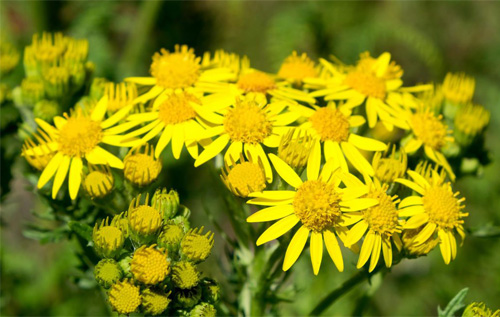By Victoria Plum
Ragwort, that pretty yellow-flowered weed (we know a weed is just a wildflower in the wrong place), is hated and vilified for its poisonous nature.

Horse people pull it up (I’ve done it and it’s horrid, hard work), but I have now learnt that this strategy is wrong.
Harm to horses from ragwort is due to bad husbandry – overgrazing – rather than the nature of the plant.
Seeds that germinate readily, and remain viable for 14 years, ensure a constant supply of lovely yellow flowers, valuable through a long, late summer season and sole host for the cinnabar moth, seven micro-moths, 12 fly species and seven beetles.
It provides a major nectar source for at least 30 species of solitary bee, 18 species of solitary wasp and 50 insect parasites: in total 177 species of insects use common ragwort for pollen or nectar.
It is indigenous to this country, and the impetus to eradicate it is irrational.
Do we rid our gardens and landscape of daffodils, privet, yew, foxgloves, cuckoo-pint, bryony (both black and white), bracken, spindle and laburnum, and many more of course, all of which are poisonous? Let alone the foreign exotica we readily foster in our houses, gardens and conservatories.
The fact is that nature is far more complex than our capacity to understand it; we ignore it at our peril.
Most of the specific details given above were found in Isabella Tree’s fascinating book, Wilding. Fail to read it at your peril!
